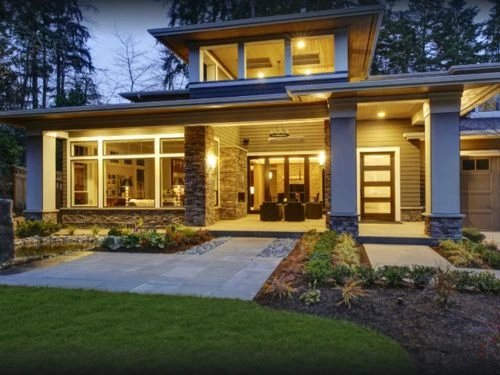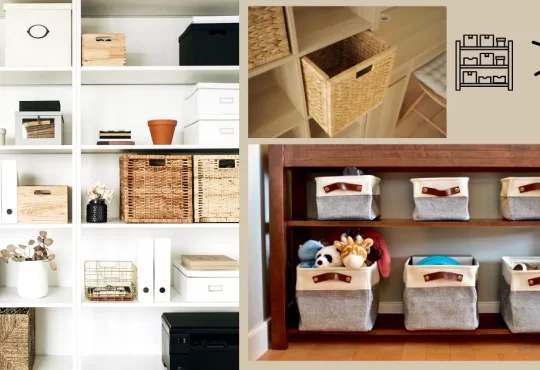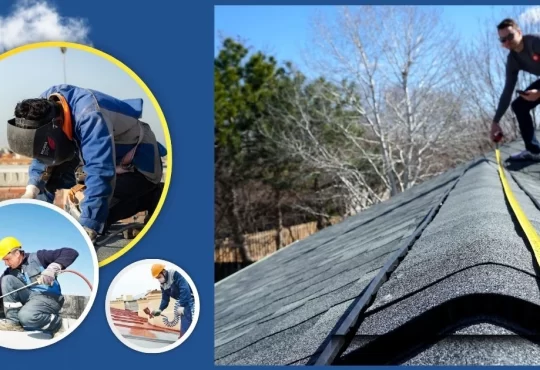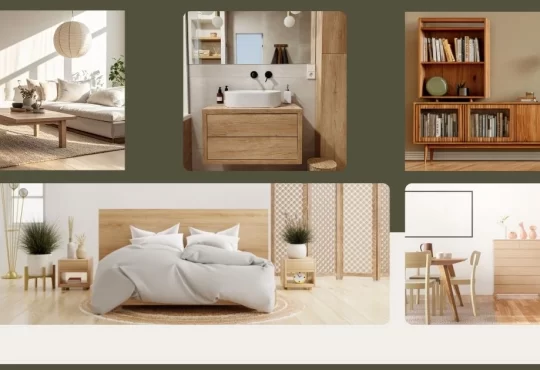Buying a luxury family home in 2025 is more than just finding a beautiful property—it’s about strategic planning, understanding market trends, and balancing comfort, investment value, and lifestyle. For families seeking space, amenities, and long-term value, navigating the luxury housing market can feel overwhelming. From selecting the right neighborhood to assessing future resale potential, preparation is crucial to making a confident and informed decision.
How to Buy a Luxury Family Home in 2025: Complete Guide
1. Understand the Luxury Market Landscape
Luxury real estate extends far beyond mere price tags, encompassing location, architectural design, and the lifestyle a property enables. In 2025, family buyers increasingly prioritize areas that offer a combination of high-quality schools, easy access to workplaces and leisure destinations, and vibrant community life. Suburban estates are gaining popularity for their space and tranquility, while eco-conscious families are drawn to homes with energy-efficient features, sustainable materials, and smart home integrations.
Properties that blend high-end finishes with practical, family-oriented layouts are particularly sought after. Features like multiple bathrooms, functional kitchens, and dedicated recreational spaces enhance daily life while maintaining a luxurious appeal. Understanding these market trends helps buyers differentiate between essential features and optional luxuries, ensuring investments align with lifestyle needs and long-term value. This strategic approach helps families make informed decisions in an increasingly competitive and evolving luxury market.
2. Prioritize Family-Centric Features
Luxury homes often boast impressive amenities, but practical functionality is just as important to families as style. Features such as spacious, well-designed kitchens allow for comfortable meal preparation and family gatherings, while multiple bathrooms reduce daily congestion and improve convenience. Kid-friendly layouts, including safe play zones, homework areas, and easily accessible bedrooms, help create a home that supports family routines and fosters a sense of comfort. Home offices or study spaces are also increasingly essential, providing a quiet environment for remote work or learning. Meanwhile, dedicated recreational areas—such as media rooms, gyms, or indoor playrooms—offer spaces for leisure activities that do not disrupt the main living areas.
Outdoor spaces also play a key role in family life. Gardens, pools, and safe play areas enhance day-to-day living and contribute to a property’s long-term value and appeal. Striking the right balance between aesthetic appeal and everyday usability ensures that the home serves as both a luxurious retreat and a practical, comfortable environment for all household members. Thoughtful design in these areas helps luxury homes support family life while maintaining elegance and style.
3. Engage Knowledgeable Real Estate Experts
Navigating the luxury real estate market requires a high level of expertise and insight. Experienced agents guide key factors, including neighborhood appreciation, zoning laws, school quality, and potential property issues. Their knowledge ensures families identify homes that align with lifestyle needs and long-term goals. In 2025, real estate professionals will increasingly rely on data-driven tools, predictive analytics, and market trend forecasts to provide a competitive advantage. This allows buyers to anticipate shifts in property values, understand emerging hotspots, and confidently make informed decisions. Leveraging expert advice streamlines the search process and reduces the risk of costly missteps, making the luxury buying experience more efficient and strategic.
4. Evaluate Investment Potential
Luxury homes are often among the most significant financial commitments a family will make, so considering immediate enjoyment and long-term investment potential is essential. Evaluating factors such as property appreciation, neighborhood growth, and ongoing demand for high-end housing helps ensure the purchase aligns with broader financial goals. Homes in areas with strong infrastructure, reputable schools, and convenient amenities tend to retain or appreciate over time, providing a safer, more predictable investment. Additionally, properties with unique features, sustainable design elements, or sought-after layouts often maintain desirability, enhancing both resale prospects and overall asset security. Thoughtful evaluation enables families to select luxury properties that balance comfort, lifestyle benefits, and financial prudence.
5. Consider Eco-Friendly and Smart Home Features
Sustainability and technology are increasingly central to the luxury real estate market. In 2025, families prioritize energy-efficient systems, solar panels, and smart home integrations that manage lighting, security, heating, and climate control. These features enhance day-to-day convenience and significantly reduce utility costs over time, making the home more sustainable and cost-effective. Eco-friendly designs—including high-performance insulation, water-saving fixtures, and renewable energy solutions—add long-term value while appealing to environmentally conscious buyers. Incorporating smart home technology ensures seamless control over household systems, future-proofs the property, and enhances its attractiveness in the resale market, combining luxury with practicality and forward-thinking innovation.

6. Conduct Thorough Inspections
Even high-end properties require careful due diligence. Comprehensive inspections should cover structural integrity, plumbing, electrical systems, and pest control, ensuring the home is safe, functional, and free of hidden issues. For older estates or historic properties, additional attention is required to review renovation history, maintenance records, and potential repair costs, including roofing, foundations, and HVAC systems. Detailed inspections help identify any costly surprises before purchase, protecting the family’s investment and peace of mind. In the luxury market, where properties represent significant financial commitments, thorough evaluation is critical in safeguarding value and avoiding unexpected setbacks. Ensures there are no hidden surprises in such a necessary purchase.
7. Plan for Lifestyle and Community
In luxury real estate, the appeal of a home extends beyond its walls to include the surrounding neighborhood and community. Families often prioritize proximity to high-quality schools, parks, recreational facilities, and cultural amenities, as these factors directly influence daily life and long-term satisfaction. Access to community centers, walking trails, sports facilities, and entertainment venues contributes to a vibrant and balanced lifestyle, making the neighborhood as valuable as the home.
Exploring a community in person provides essential insight into its character and atmosphere. Attending local events, visiting shops and cafes, and interacting with neighbors can reveal whether the environment fosters safety, inclusivity, and engagement. These elements ensure the chosen area aligns with lifestyle preferences, daily routines, and long-term family goals. In essence, thoughtful attention to community dynamics is just as crucial as evaluating the property itself, helping families secure a home and a supportive and enriching environment.
8. Financing and Budget Strategy
Even in the luxury market, careful financial planning is essential to ensure the purchase aligns with long-term goals. Beyond the initial price, families must also account for property taxes, insurance, routine maintenance, and potential renovation costs, which can significantly add to the total investment. Unexpected expenses—such as landscaping, energy system upgrades, or interior customizations—should also be factored into the budget to prevent financial strain after the purchase.
Collaborating with financial advisors experienced in luxury real estate provides valuable guidance. These professionals help structure mortgages, assess tax implications, and develop a comprehensive financial plan that balances the immediate purchase with long-term wealth preservation. By taking a strategic approach to financing, families can secure their ideal luxury home while maintaining financial stability, ensuring that the investment enhances their lifestyle without compromising future flexibility or security.
9. Relocation and Transition Planning
Moving into a luxury property, particularly for families relocating from different cities or countries, demands careful planning and coordination. Key considerations include school transfers, local registrations, healthcare providers, and utility setup, all of which must align with the move-in timeline to ensure a smooth transition. Special attention is often required for transporting high-value or delicate items, such as artwork, antiques, or designer furnishings, to prevent damage and maintain their value.
Many families benefit from concierge moving services or relocation specialists, which handle logistics from packing to transport, customs clearance (for international moves), and setup in the new home. These services minimize disruptions to daily routines and reduce the stress typically associated with major moves, allowing families to focus on settling into their new community. Thoughtful planning ensures a seamless physical transition and a positive emotional experience, helping families establish comfort and stability quickly in their luxury residence.
10. Trends Shaping Luxury Family Homes in 2025
Eco-Luxury
- Modern luxury homes increasingly embrace sustainability without compromising style. Eco-luxury properties are often built with sustainable materials, such as reclaimed wood, recycled steel, and low-VOC finishes, thereby reducing environmental impact while maintaining high-end aesthetics. Many incorporate solar panels, energy-efficient appliances, and advanced insulation, helping to lower utility costs and carbon footprints. Innovative water management systems, such as rainwater harvesting and greywater recycling, support conservation and create a more self-sufficient household. These features appeal to environmentally conscious families and enhance long-term property value and marketability.
Flexible Spaces
- The modern luxury home prioritizes adaptability, offering spaces that can transform to meet changing household needs. Open or modular rooms enable families to transform a home office into a gym, playroom, or guest suite as their needs evolve. Built-in storage, movable partitions, and multipurpose furniture enhance functionality, while thoughtful design ensures each space remains stylish and cohesive. Flexible layouts support day-to-day living and special occasions, making homes more versatile and future-proof for growing families.
Integrated Technology
- Technology integration has become a hallmark of contemporary luxury living. Intelligent systems control lighting, climate, security, and entertainment, creating seamless, efficient, and comfortable daily experiences. Kitchens equipped with connected appliances, voice-activated assistants, and app-based monitoring streamline meal preparation and household management. Climate control systems optimize energy usage, while security features—such as surveillance cameras, smart locks, and automated alerts—provide peace of mind. Integrated technology enhances convenience and comfort, adding long-term value and modern appeal to luxury properties.
Community-Oriented Living
- Modern luxury families often prioritize neighborhoods that foster connection, safety, and convenience. Gated communities offer added security, creating a controlled environment where children can play freely and families feel at ease. Many of these neighborhoods offer family-friendly amenities, including parks, playgrounds, sports courts, swimming pools, and social clubs, which encourage resident interaction. Shared spaces and organized community events help cultivate relationships, fostering a sense of belonging and enhancing the overall quality of life. Thoughtful planning of streets, green spaces, and recreational facilities ensures that lifestyle and leisure needs are met, making the community as integral to the home as the property.
Investment-Driven Choices
- Luxury homes are not just lifestyle purchases—they are long-term investments. Families increasingly focus on high-demand neighborhoods with strong appreciation potential, prioritizing areas with robust infrastructure, reputable schools, and convenient access to commercial and cultural hubs. Properties located in regions with consistent buyer interest and limited future development risk are more likely to maintain or grow in value over time. This strategic approach balances immediate enjoyment and financial security, enabling homeowners to enjoy a premium living environment while safeguarding their investment for the future. Careful research into market trends and community growth ensures luxury purchases are desirable and resilient assets.
Making Smart Luxury Choices
In 2025, navigating the market for luxury family homes requires a blend of aspiration and strategy. Families who carefully evaluate amenities, location, investment potential, and lifestyle alignment make confident, informed decisions. With thoughtful planning, expert guidance, and a focus on comfort and long-term value, purchasing a luxury family home can be a seamless and rewarding experience—transforming dream living into a sustainable reality for years to come.





